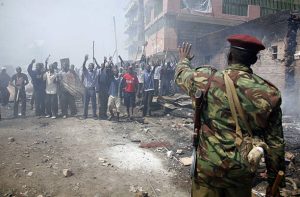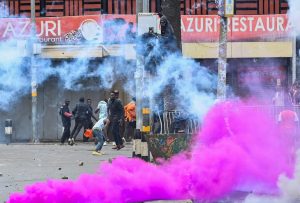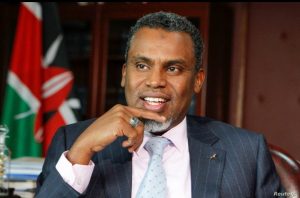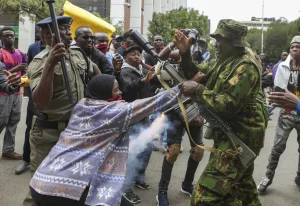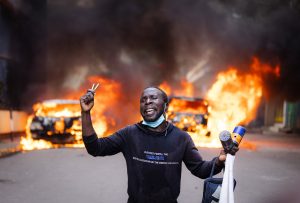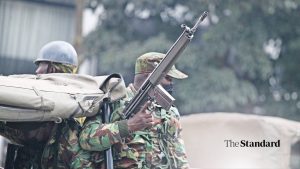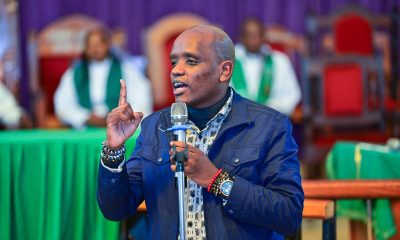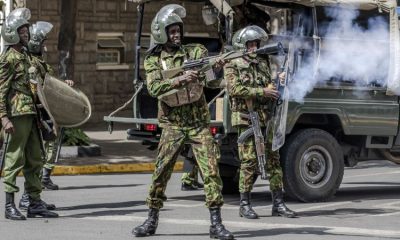Investigations
Inside Police Plans To Contain June 25 Protests
Top police commanders concluded a series of high-level strategy meetings on Thursday, submitting a comprehensive security plan to the National Security Council in a session attended by President William Ruto.

Security commanders finalize comprehensive strategy as Kenya braces for mass demonstrations over Albert Ojwang’s death in custody
Kenyan police have finalized an extensive security strategy to manage the planned June 25 protests, deploying hundreds of officers across Nairobi’s Central Business District as the country braces for what could be the largest demonstrations since last year’s deadly anti-tax protests.
Top police commanders concluded a series of high-level strategy meetings on Thursday, submitting a comprehensive security plan to the National Security Council in a session attended by President William Ruto.
The plan outlines how police intend to manage the protests and maintain order, particularly in the capital city, as tensions continue to escalate following the death of blogger and teacher Albert Ojwang in police custody.
Strategic Command Structure
Inspector General of Police Douglas Kanja is leading the preparations, coordinating with senior commanders including Directorate of Criminal Investigations Director Mohammed Amin, Deputy Inspector General Gilbert Masengeli, and acting DIG Patrick Tito.
The planning process began with initial discussions on Tuesday at the National Police Service headquarters at Jogoo House, followed by a second meeting on Wednesday where a harmonized operational strategy was drafted.
“Yes, we are on top of things. Today we met with all commanders for a review of the strategic security plan,” Kanja told reporters on Thursday evening.
“The police will follow all established procedures and I urge protestors to be peaceful and to follow police guidelines.”
The Inspector General issued a stern warning to potential troublemakers: “Anybody (goons) thinking of infiltrating the peaceful demonstrations should be warned. They will spend a long time in jail.”
Deployment Strategy
The security plan involves a multi-tiered approach with hundreds of officers from various formations being deployed beginning Wednesday, June 25. Officers from the General Service Unit (GSU), Rapid Deployment Unit (RDU), and regular police units will monitor the situation across key areas of Nairobi.
Ground forces on foot patrol will be backed by colleagues in patrol cars and trucks, allowing for rapid response to any disturbances.
The GSU and Administration Police officers have been specifically tasked with breaking up demonstrations that become unruly, while a separate team from Nairobi Central Police Station has been designated to provide security for peaceful demonstrators.
Tactical Resources and Equipment
Police have positioned water cannons at strategic locations throughout the city as backup measures in case of escalation.
Roads earmarked for closure during the protest period include access routes to sensitive areas such as Parliament Road, State House Road, and other government buildings deemed high-security zones.
Depending on how the situation develops, police may also deploy mounted officers and dog units to reinforce their ground presence.
This comprehensive approach marks a significant departure from the June 2024 protests, where police were reportedly caught off guard.
Intelligence Operations
Unlike previous demonstrations, police commanders at the station level have been instructed to gather intelligence in advance.
Officers from the National Intelligence Service (NIS) have been tasked with identifying protest organizers and financiers, according to senior security sources.
To ensure seamless coordination during the protests, senior police officers will be stationed at the Police Command Centre at Jogoo House, where they will monitor developments in real-time and provide operational guidance to teams on the ground.
Background to the Protests
The upcoming demonstrations stem from public outrage over the death of 31-year-old Albert Ojwang, a teacher and blogger who died while in police custody earlier this month.
Ojwang was arrested on June 6 in Homa Bay County on charges of “defaming” Deputy Inspector General Eliud Lagat, after publishing posts exposing alleged high-level corruption in the police force.
The blogger was transferred over 350 kilometers from his hometown to Nairobi Central Police Station, where he died under circumstances that have sparked widespread condemnation.
An autopsy revealed that Ojwang’s injuries were not self-inflicted, contradicting initial police claims.
President William Ruto condemned Ojwang’s death as “heartbreaking and unacceptable,” while the European Union, United States, and United Kingdom have all called for a transparent investigation.
The incident has reignited memories of last year’s anti-tax protests, where at least 60 people were killed during a security force crackdown, including a 12-year-old boy who was shot in the back.
Recent Escalation
Protests have already erupted across Nairobi this week, with demonstrations concentrated around Nation Centre, Moi Avenue, and Kenyatta Avenue in the CBD. Police have deployed tear gas against crowds, and several incidents have drawn international attention, including the close-range shooting of an unarmed protester on Tuesday.
The situation further escalated when Deputy Inspector General Lagat announced he was stepping aside to allow investigations into Ojwang’s death, just hours before Monday’s high-level security meeting at State House between Kanja and Interior Cabinet Secretary Kipchumba Murkomen.
Police Assurances
Despite the heavy security preparations, police officials have emphasized their commitment to facilitating peaceful protests.
National Police Service spokesperson Michael Muchiri confirmed that multiple strategy meetings were underway to ensure full preparedness.
“It is meeting after meeting now. We want to be well prepared and we will offer security,” Muchiri stated.
Nairobi Regional Police Commander George Seda assured residents that sufficient security measures had been implemented.
“We will provide enough security for protesters and for all other Kenyans,” Seda said during a press briefing at his office on Wednesday.
Historical Context
The June 25 date holds particular significance, as it marks exactly one year since thousands of protesters stormed Parliament during last year’s anti-tax demonstrations.
That day saw unprecedented scenes of civil unrest, with protesters breaking into the legislature building while police opened fire, resulting in multiple casualties.
The anniversary timing has added symbolic weight to the upcoming protests, with some activists describing June 25 as “like a second Independence Day” for Kenya’s youth-led protest movement.
As Kenya prepares for what could be a defining moment in its recent political history, the comprehensive police strategy reflects lessons learned from previous demonstrations.
However, the success of these plans will largely depend on maintaining the delicate balance between ensuring public order and respecting citizens’ constitutional right to peaceful assembly.
The protests are expected to last several days, with organizers calling for sustained demonstrations until their demands for accountability and justice are met.
The coming week will test both the police’s new approach to crowd control and the resilience of Kenya’s democratic institutions under pressure.
For the latest updates on the June 25 protests and security developments, follow our continuing coverage.
Kenya Insights allows guest blogging, if you want to be published on Kenya’s most authoritative and accurate blog, have an expose, news TIPS, story angles, human interest stories, drop us an email on [email protected] or via Telegram
-
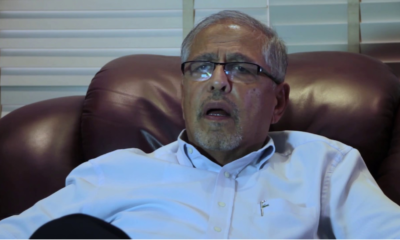
 News4 days ago
News4 days agoTemporary Reprieve As Mohamed Jaffer Wins Mombasa Land Compensation Despite Losing LPG Monopoly and Bitter Fallout With Johos
-

 Business2 weeks ago
Business2 weeks agoPanic As Payless Africa Freezes With Billions of Customers Cash After Costly Jambopay Blunder
-

 Investigations4 days ago
Investigations4 days agoFrom Daily Bribes to Billions Frozen: The Jambopay Empire Crumbles as CEO Danson Muchemi’s Scandal-Plagued Past Catches Up
-

 Sports4 days ago
Sports4 days ago1Win Games 2025: Ultimate Overview of Popular Casino, Sports & Live Games
-

 News2 weeks ago
News2 weeks agoSCANDAL: Cocoa Luxury Resort Manager Returns to Post After Alleged Sh28 Million Bribe Clears Sexual Harassment and Racism Claims
-

 Investigations1 week ago
Investigations1 week agoHow SportPesa Outfoxed Paul Ndung’u Of His Stakes With A Wrong Address Letter
-

 Business4 days ago
Business4 days agoHass Petroleum Empire Faces Collapse as Court Greenlights KSh 1.2 Billion Property Auction
-

 Investigations1 week ago
Investigations1 week agoInside the Deadly CBD Chase That Left Two Suspects Down After Targeting Equity Bank Customer Amid Insider Leak Fears

